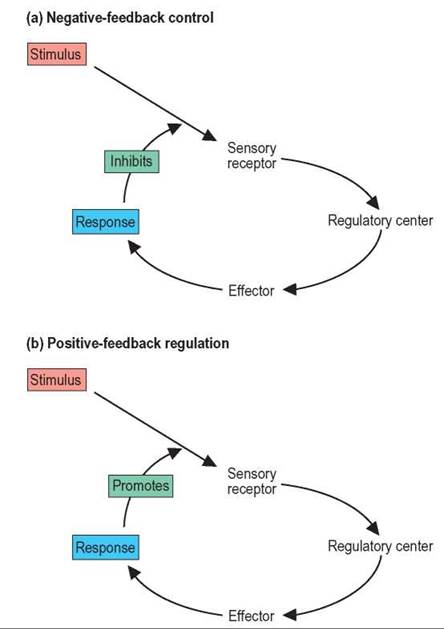CONCEPTS IN BIOLOGY
PART VI. PHYSIOLOGICAL PROCESSES
26. The Body's Control Mechanisms and Immunity

Court Finds No Link Between Vaccination and Austim
Measles/Mumps/Rubella vaccination important for public health
Autism is a disorder of the brain that results in a variety of abnormal behavior patterns. General symptoms include difficulty in participating in social situations, repetitive behaviors, late development of language skills, and preoccupation with certain topics. The disorder may also range from severe to mild and affects about 1 in 150 births. It is clear that genes are involved in the development of autism, but it is also strongly suspected that there are environmental factors that trigger its development.
Because parents and their physicians often recognize autism’s symptoms when the children are going through their initial immunizations for childhood diseases, many people have associated the onset of autism with vaccines. This has led to a significant number of people wanting to exclude their children from immunizations, particularly the measles, mumps, and rubella (MMR) vaccine.
However, avoiding immunization also has significant risk. About 1 in 100 children infected with measles develops blindness, 5 in 100 develop ear infections, and 1 in 1000 develops encephalitis. Rubella also has serious consequences. Pregnant women who develop rubella in the first trimester of their pregnancy have about an 85% chance of having a child with a significant birth defect.
In 2008 a special federal appeals court ruled that, based on scientific evidence, there was no link between the MMR vaccine and autism. This legal decision cleared the way for stronger requirements for the vaccination of children. However, some people still will be unconvinced, and avoid having their children vaccinated.
• What is a vaccine?
• How do vaccines work to prevent disease?
• Should vaccinations for childhood infectious diseases be mandatory?
ü Background Check
Concepts you should understand in order to get the most out of this chapter:
• The various types of chemical reactions (chapter 2)
• The structure of eukaryotic cells (chapter 4)
• How cellular processes are controlled by enzymes (chapter 5)
26.1. Coordination in Multicellular Animals
A large, multicellular organism, which consists of many kinds of systems, must have a way of integrating various functions so that it can survive. Its systems must be coordinated to maintain a reasonably constant internal environment. Recall from chapter 1 that homeostasis is the maintenance of a constant internal environment as a result of monitoring and modifying the functioning of various systems. Homeostatic mechanisms are involved in maintaining blood pressure, body temperature, body fluid levels, and blood pH. When we run up a hill, our leg and arm muscles move in a coordinated way to provide power. They burn fuel (glucose) for energy and produce carbon dioxide and lactic acid as waste products, which tend to lower the pH of the blood. The heart beats faster to provide oxygen and nutrients to the muscles, we breathe faster to supply the muscles with oxygen and get rid of carbon dioxide, and the blood vessels in the muscles dilate to allow more blood to flow to them. Running generates excess heat. As a result, more blood flows to the skin to get rid of the heat, and sweat glands begin to secrete fluid, thus cooling the skin. All these automatic internal adjustments help the body maintain a constant level of oxygen, carbon dioxide, and glucose in the blood; constant pH; and constant body temperature.
One common homeostatic mechanism is negative-feedback inhibition, a mechanism in which an increase in the output of a reaction causes a decrease in the stimulus, which eventually causes a decrease in the output (figure 26.1a). A common negative-feedback inhibition mechanism is a household heating system. The thermostat is set to a particular temperature. When the temperature in the room drops too low, the thermostat sends a message (stimulus) to the furnace to produce heat, and the temperature in the room rises. As the temperature rises to the set point, it eventually causes the thermostat to send a message that turns the furnace off.

FIGURE 26.1. Negative-and Positive-Feedback Control
(a) Negative-feedback control occurs when the response to a stimulus inhibits the stimulus, thus reducing the response. (b) Positive-feedback happens when a response to a stimulus causes an increase in the stimulus which further increases the response.
Negative-feedback systems work in your body in a similar manner. Various body functions have set points, such as body temperature, blood pH, and blood osmotic pressure. When the body drifts from the set point, messenger molecules move throughout the body and provide a stimulus to cause a response that will correct the change from the set point. When a response causes a change that brings the body back to the set point, a message is sent back to a control center telling it to stop producing the stimulus. For example, your body seeks to maintain a constant level of glucose in the blood. After you eat a meal, the level of glucose begins to rise, which is the stimulus for the pancreas to release the hormone insulin. The insulin causes cells of the muscles and liver to remove glucose from the blood and store it as glycogen. As the glucose is removed from the blood, the pancreas is no longer stimulated to release insulin and removal of glucose from the blood stops. A companion hormone, glucagon, is released from the pancreas when blood glucose levels fall below the set point. It stimulates the liver to break down glycogen and release glucose into the blood. As the blood glucose level rises, the amount of glucagon falls. Thus these two negative-feedback mechanisms result in a fluctuation around the set point, thus maintaining a relatively constant concentration of glucose.
The alternative to negative feedback is positive-feedback regulation. In positive-feedback regulation, a stimulus causes a response that leads to an even stronger stimulus (figure 26.1b). Obviously, this does not result in homeostasis. There are a few situations in which positive feedback is useful. For example, positive feedback occurs during childbirth. The release of the hormone oxytocin causes contractions of the uterus. Each time the uterus contracts, signals are sent to the brain, where more oxytocin is produced, causing the uterine muscles to contract again. This repeated stimulation continues until the baby is born. Blood clotting is another example of positive feedback. Chemicals released at the site of injury cause platelets to collect at the site and disintegrate, releasing substances that attract additional platelets. In both of these cases there is a limit to how long the positive feedback continues. Uterine contractions stop shortly after the baby is born and clots stop forming once the hole has been plugged.
26.1. CONCEPT REVIEW
1. Describe how insulin, the liver, and the level of glucose in the blood demonstrate negative feedback.
2. Explain why positive feedback is not involved in maintaining homeostasis.